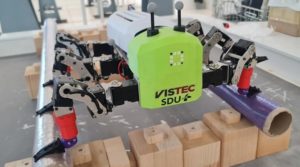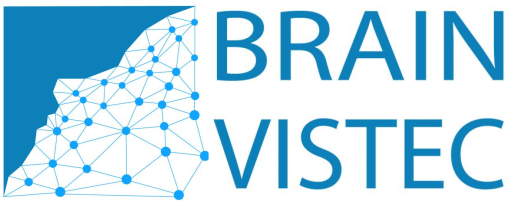Frontier Research Overview
How can we develop soft body and brain for intelligent motions and soft interactions?

To address this challenge, we investigate the effect of soft material on control, learning, and adaptation by introducing soft material into the rigid robot body or replacing the rigid parts with soft material. We also aim to identify the balance between the rigidness and softness of robot bodies for robust and versatile behaviors.
Research Highlights
2023
Asawalertsak, N., Nantareekurn, W., Manoonpong, P. (2023) A small soft-bodied crawling robot with electromagnetic legs and neural control for locomotion on various metal terrains,the 6th IEEE-RAS International Conference on Soft Robotics (RoboSoft 2023), DOI: 10.1109/RoboSoft55895.2023.10122119
For more details, see Asawalertsak et al., RoboSoft , 2023.
2022
We have developed a simple soft robot model with a bio-inspired asymmetric structure that uses a combination of intrinsic mechanical and material intelligence as well as external, dynamic soft body and substrate interactions for crawling.
For more details, see Asawalertsak et al., Soft Robotics, 2022.
2021
Fin Ray Crossbeam Angles for Efficient Foot Design for Energy-Efficient Robot Locomotion

The work, in collaboration with University of Southern Denmark, Kiel University (Germany), London South Bank University (UK), and Islamic Azad University (Iran), introduces insect-inspired robot technology that breaks with 25-year-old gripping technology – the result is creating international attention. They use an integrative approach, combining 3D printing with soft material, finite element modeling, and neural control, to 1) manufacture the insect-inspired robot foot/gripper structure with compliancy; 2) investigate the effect of the structure under different inner crossbeam angles, different loads, and different cylindrical substrates; and 3) finally demonstrate the use of the novel insect-inspired structure as robot feet for energy-efficient on-pipe locomotion and as robot grippers for fragile object grasping.
For more details, see Manoonpong et al., Advanced Intelligent Systems, 2021.
A video link of the Fin Ray Crossbeam Angles
VENOM: Versatile, Adhesive, and Soft Material for Various Surface Adhesion

We propose for the first time a versatile, adhesive, and soft material for various surface adhesion (VENOM). It has been developed based on a mixture of super-soft, fast cure platinum-catalyzed silicone (Ecoflex 00-10) and iron powder. Through our empirical investigation, we realized that VENOM with iron powder in the amount of 30% by weight of silicone produced the highest dynamic friction and normal adhesion forces compared to other ratios. We compared the performance of VENOM with other soft (sticky) materials (e.g., other silicone types and non-directional gecko-inspired material) on smooth and rough surfaces. Our experimental results show that VENOM overall has an excellent performance. It has the highest dynamic friction and adhesion forces on both surfaces, except in the case of smooth surfaces where the gecko-inspired material has the highest normal adhesion force. Although the adhesion force of VENOM on smooth surfaces is lower than the gecko-inspired material, several tests show that it has a lower variance. This suggests that VENOM has better repeatable adhesive performance and durability. We believe that this simple, low-cost, dry adhesive material will be beneficial in many aspects of (soft) robotics as well as climbing robot development.
